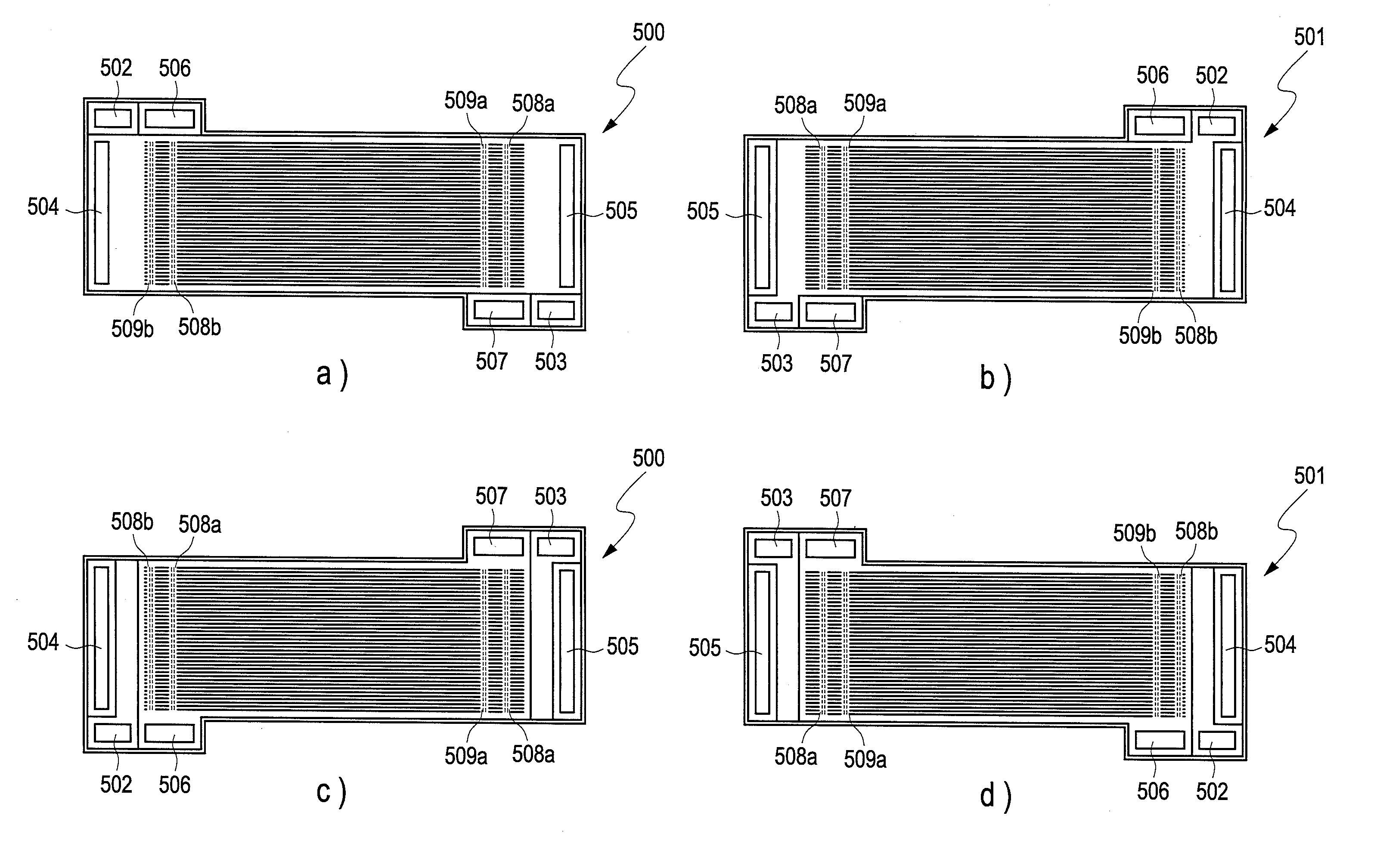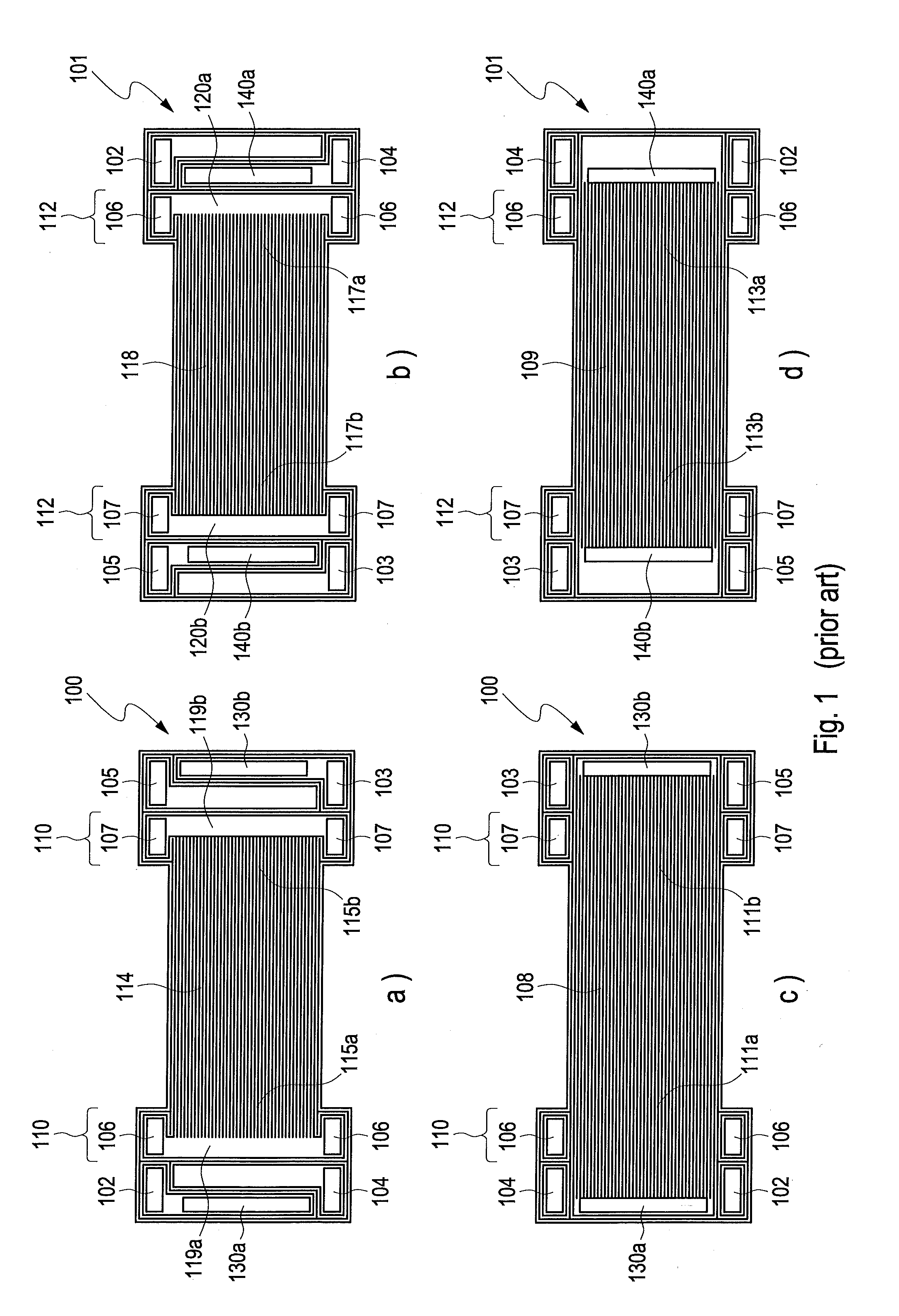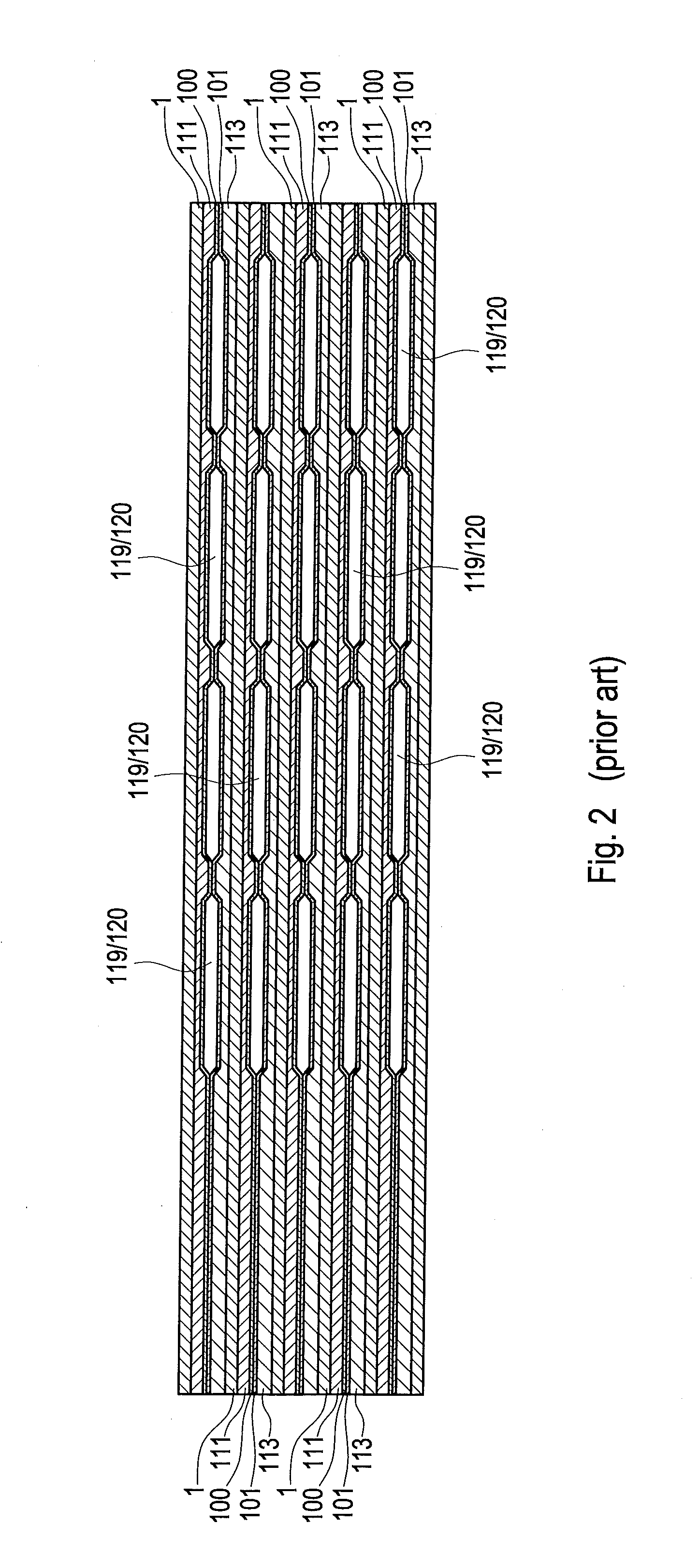Flow field plate for reduced pressure drop in coolant
a flow field and coolant technology, applied in the direction of cell components, electrochemical generators, cell component details, etc., can solve the problems of affecting the flow of other fluids in the coolant transition region, non-uniform distribution, and non-uniform sharing, so as to increase the height of the coolant duct, and maintain the overall volume of the stack
- Summary
- Abstract
- Description
- Claims
- Application Information
AI Technical Summary
Benefits of technology
Problems solved by technology
Method used
Image
Examples
example
[0049]The coolant pressure drop benefit of an exemplary flow field plate design of the invention was calculated with regards to a fuel cell stack design intended for use in automotive applications. The automotive stack used a plate design similar to that shown in FIGS. 1a, b, c, and d and FIG. 2. The cell pitch in the stack (i.e. cell to cell spacing in the stack) was 1.2 mm. The total height of the closed coolant ducts formed by adjacent, mated anode and cathode plates in the stack was just 3.1 mm high. This allowed for an acceptable total height of 0.25 mm for the closed oxidant transition channels and a height of 0.15 mm for the closed fuel transition channels.
[0050]For comparison, a similar fuel cell stack to the above was considered except that it employed a plate design similar to that shown in FIGS. 3 and 4a, b, c, and d. Here, it was expected that a total height of 0.62 mm for the closed coolant ducts could readily be obtained in molded or formed plates, while maintaining th...
PUM
| Property | Measurement | Unit |
|---|---|---|
| output voltage | aaaaa | aaaaa |
| height | aaaaa | aaaaa |
| height | aaaaa | aaaaa |
Abstract
Description
Claims
Application Information
 Login to View More
Login to View More - R&D
- Intellectual Property
- Life Sciences
- Materials
- Tech Scout
- Unparalleled Data Quality
- Higher Quality Content
- 60% Fewer Hallucinations
Browse by: Latest US Patents, China's latest patents, Technical Efficacy Thesaurus, Application Domain, Technology Topic, Popular Technical Reports.
© 2025 PatSnap. All rights reserved.Legal|Privacy policy|Modern Slavery Act Transparency Statement|Sitemap|About US| Contact US: help@patsnap.com



